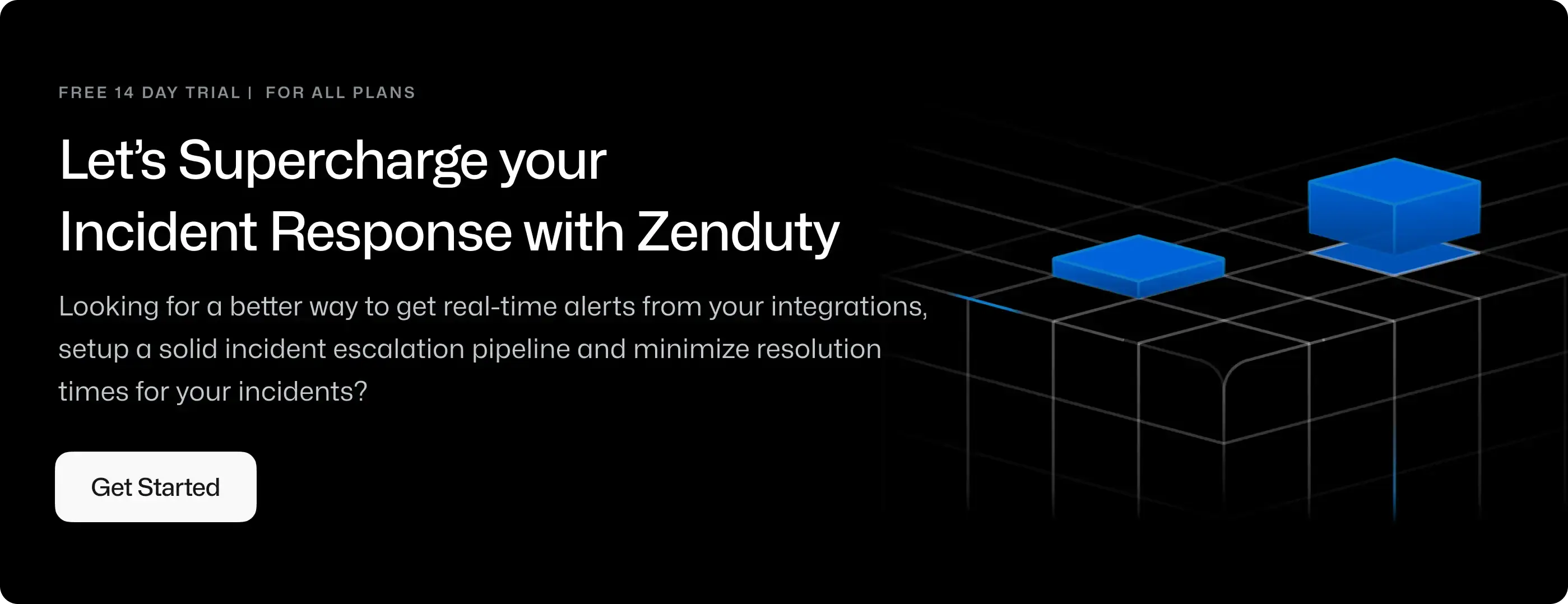Microsoft Azure Alerts Monitoring Integration Guide
Microsoft Azure alerts helps you monitor applications, infrastructure, and servers for various metrics. For an alert rule on a metric value, when the value of a specified metric crosses a threshold assigned, the alert rule becomes active and sends a notification to Zenduty. For an alert rule on events, a rule can send a notification on every event, or, only when a certain number of events happen.
What can Zenduty do for Azure users?
With the Azure Monitoring Integration, Zenduty routes new Azure infrastructure alarm alerts to the right team and notifies them based on on-call schedules via email, text messages(SMS), phone calls(Voice), Slack, Microsoft Teams and iOS & Android push notifications, and escalates alerts until the alert is acknowledged or closed. Zenduty provides your NOC, SRE and application engineers with detailed context around the Azure Monitor alert along with playbooks and a complete incident command framework to triage, remediate and resolve incidents with speed.
Whenever an Azure alarm is triggered(in the Fired or Started state), Zenduty will create an incident. When that alarm returns to the Resolved state, Zenduty will auto-resolve the incident.
You can also use Alert Rules to custom route specific Azure alerts to specific users, teams or escalation policies, write suppression rules, auto add notes, responders and incident tasks.
To integrate Azure Monitor with Zenduty, complete the following steps:
In Zenduty:
-
To add a new Microsoft Azure integration, go to Teams on Zenduty and click on the team you want to add the integration to.
-
Next, go to Services and click on the Manage button correspoding to the relevant Service.
-
Go to Integrations and then Add New Integration. Give it a name and select the application Microsoft Azure from the dropdown menu.
-
Go to Configure under your integrations and copy the Webhook URL generated.
In Microsoft Azure:
-
Open the Azure portal and click on Alerts. Search on the search bar if not directly visible.

-
Create a new alert rule.

-
Select the resources which you want to monitor. Here, we shall monitor a Virtual Machine.

-
Select the condition based on which the alert is to be triggered. For instance, we can create an alert which is triggered when the CPU utilization of a Virtual Machine crosses 50%.


-
Create an Action Group (or use a previously created action group)

-
Enter the Action group name and Display Name.

-
Enter an action name and select Webhook under Action Type. A dialog box appears in the side. Enter the Webhook URL copied from Step 4 above.

-
Enable the common alert schema by toggling the button to Yes and then click on OK.
-
Click on OK to add the action group.
The action group has now been created. It should visible under the section of Action Groups. -
Fill in the alert details appropriately. The alert rule name along with the severity will appear as the alert message and the alert description will appear as the summary in Zenduty.

-
Save the alert rule. You have now successfully added Azure as an integration to Zenduty!
